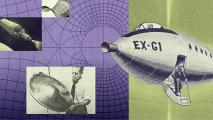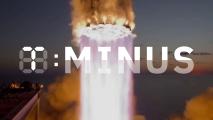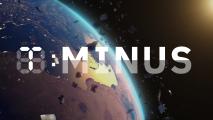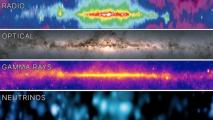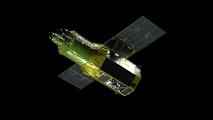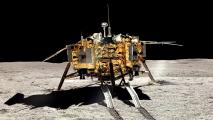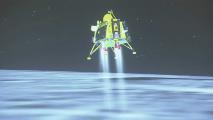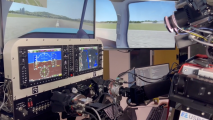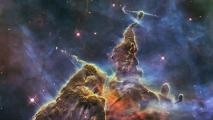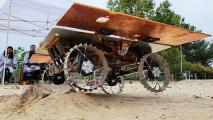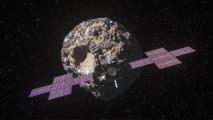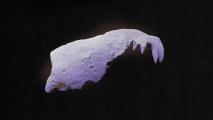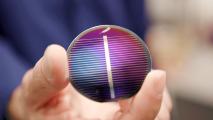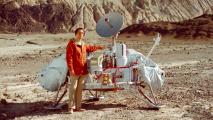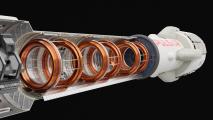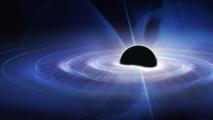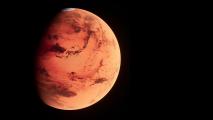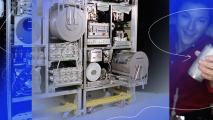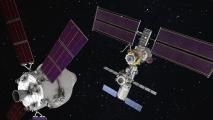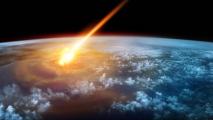
The New Space Race
Reusable rockets are real, the internet is in orbit, and we’re heading to Mars. With space manufacturing, asteroid mining, and lunar bases, the new space race has just begun, transforming life on Earth forever.
Read More
“Ghostly” neutrinos help us see our Milky Way as never before
A unique photograph of the Milky Way galaxy was captured using the IceCube detector, which observes high-energy neutrinos from space.
NASA’s next-gen X-ray observatory is ready for launch (Updated)
XRISM is a next-gen X-ray observatory expected to revolutionize our understanding of the universe’s more energetic objects.
New moon map reveals structures hidden beneath the lunar surface
A new moon map that reveals structures hidden deep beneath the lunar surface also helps unravel the mystery of the moon’s past.
India makes history by landing on the lunar south pole
India is the first nation to soft land on the lunar south pole, an elusive region thought to harbor water ice.
Why aliens are likely to be AI
Fundamental biological limitations will make long-distance space travel all but impossible for organisms. AI is more suitable.
A robot pilot is ready to fly a real plane — are you onboard?
PIBOT, a humanoid robot pilot developed in South Korea, is ready to take control of a real plane for the first time.
5 revolutionary cosmic ideas that turned out to be wrong
These ideas could have revolutionized our concept of the Universe, but since evidence paves the road to reality, we’ve had to abandon them.
Time has some fundamental differences from every other dimension
While spacetime itself is four dimensional, it can be decomposed into three spatial dimensions and one time dimension.
NASA is sending a team of autonomous robots to the moon
NASA is sending three autonomous mobile robots to the moon where they’ll have to work as a team under challenging conditions.
NASA mission to a $10,000-quadrillion asteroid is two months from launch
NASA hopes to get a glimpse at Earth’s core by sending a spacecraft to 16 Psyche, an metal-rich asteroid 280 million miles away.
Algorithm finds a potentially hazardous asteroid missed by NASA
HelioLinc3D, an algorithm designed to spot potentially hazardous asteroids in telescope images, just found its first threatening space rock.
NASA gives Blue Origin $35 million to turn moon dust into solar cells
A technology that autonomously fabricates solar cells out of lunar regolith just earned Blue Origin a $35 million NASA contract.
NASA may have accidentally killed the only life we ever found on Mars 50 years ago
Life may have been discovered on Mars almost 50 years ago, but it could have been unintentionally destroyed.
A fusion rocket designed to travel 500,000 mph is under construction
British startup Puslar Fusion is developing a fusion rocket it says will travel 500,000 mph, expanding our reach throughout the solar system.
World’s oldest trees reveal the largest solar storm in history
One of the greatest threats to all our infrastructure is a solar storm, which has the potential to cause a multi-trillion dollar disaster.
Astronomers use dead stars to measure gravitational waves produced by ancient black holes
As research challenges theories of how galaxies evolved, studying the era after the Big Bang using gravitational waves could be invaluable.
How Mars lost its magnetic field — and then its oceans
Were it not for Earth’s strong magnetic field, our planet would look just like Mars. And strong magnetic fields may be rare in the Universe.
NASA now recycles 98% of astronauts’ urine and sweat
A new water recycling system on the ISS can recover a record-breaking 98% of the water used by astronauts.
NASA’s ChatGPT-like AI will let spaceships talk to astronauts
NASA is developing a ChatGPT-style interface for spacecraft, giving astronauts the ability to talk to the machines using natural language.
A comet impact 13,000 years ago might have wiped out megafauna
Researchers note a “synchronicity” of geochemical signals suggesting that fragments of a comet struck Earth approximately 13,000 years ago.
Get inspired with the most innovative stories shaping the world around us.
